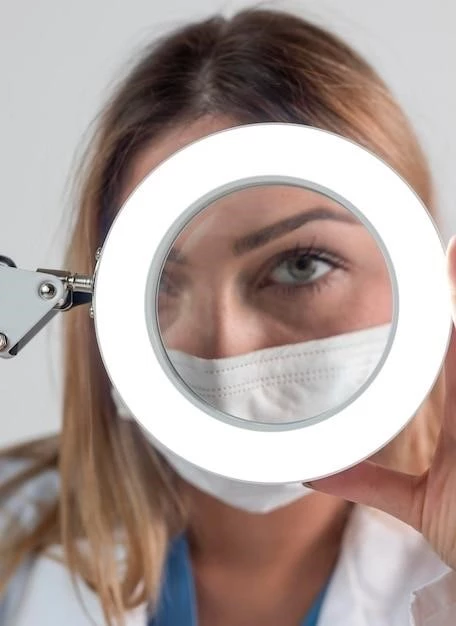It is crucial to identify the underlying causes of blepharoptosis, which include age-related factors, nerve damage, eye trauma, muscle weakness, and congenital conditions․ Consulting with an ophthalmologist can help determine the root cause․
Blepharoptosis, commonly known as droopy eyelid, can be caused by various factors․ Age-related changes in the eyelid muscles, nerve damage affecting eyelid movement, eye trauma, muscle weaknesses, and congenital conditions can all contribute to this condition․ It is essential to consult with an ophthalmologist to determine the specific cause in each case․
Age-related blepharoptosis occurs due to the stretching and weakening of the levator muscle that lifts the eyelid․ Nerve damage, often a result of medical conditions like diabetes or trauma, can lead to impaired muscle function causing drooping eyelids․ Eye trauma, such as injury or surgery, can also result in blepharoptosis․
Muscle weakness, whether due to neurological conditions like myasthenia gravis or muscular dystrophy, can cause the eyelids to droop․ Congenital conditions, like Horner syndrome or Marcus Gunn jaw-winking syndrome, can also be underlying causes of blepharoptosis from birth․
Understanding the specific cause of blepharoptosis is crucial for determining the most effective treatment option․ Once the cause is identified, appropriate treatment can be recommended to address the underlying issue and improve the droopy eyelid condition․
Treatment Options for Blepharoptosis
The treatment for blepharoptosis depends on the underlying cause and severity of the condition․ Mild cases may not require treatment, but if the drooping eyelid affects vision or appearance, options include⁚
- Conservative Management⁚ In some cases, using special glasses with a ptosis crutch or eyelid tape can help lift the eyelid temporarily․
- Blepharoplasty⁚ This surgical procedure involves tightening the levator muscle or reattaching it higher on the eyelid to lift and support the lid․
- Frontalis Sling⁚ For severe ptosis, a sling can be created using a synthetic material or the patient’s tissue to lift the eyelid․
- Brow Lift⁚ If drooping is caused by brow descent, a brow lift surgery can help elevate the brows and improve eyelid positioning․
It is essential to consult with an ophthalmologist or a plastic surgeon specializing in eyelid surgeries to discuss the most suitable treatment option based on individual factors and preferences․ They can assess the condition, discuss risks and benefits, and tailor a treatment plan to achieve the best outcome for the patient․
Myopia, commonly known as nearsightedness, results from the eye being too long or the cornea being too curved․ Symptoms include blurred distance vision, eye strain, and headaches․ Early diagnosis and management are crucial to prevent progression․
Understanding Myopia⁚ Causes and Symptoms
Myopia, or nearsightedness, is primarily caused by a combination of genetic and environmental factors․ Genetics play a significant role, and individuals with myopic parents are more likely to develop it․ Environmental factors, such as excessive near work and limited outdoor activities, can also contribute to its development․
The main symptom of myopia is blurred distance vision, making it difficult to see objects far away clearly․ Other common symptoms include eye strain, headaches, and squinting to see distant objects․ Children with myopia may experience frequent rubbing of the eyes or poor performance in school due to vision issues․
Regular eye examinations are essential to detect myopia early, especially in children whose eyes are still developing․ If you or your child are experiencing any symptoms of myopia, it’s important to consult an eye care professional for an accurate diagnosis and appropriate management plan to address the condition and prevent further progression․
Managing Myopia in Children
Managing myopia in children is essential to prevent its progression and minimize potential complications․ Strategies for managing childhood myopia include⁚
- Regular Eye Exams⁚ Schedule routine eye exams to monitor vision changes and prescribe appropriate corrective measures․
- Corrective Lenses⁚ Eyeglasses or contact lenses can help children see clearly and reduce the strain on their eyes․
- Orthokeratology⁚ Using specialized contact lenses overnight to reshape the cornea temporarily and improve vision during the day․
- Low-Dose Atropine Eye Drops⁚ Atropine eye drops can help slow down myopia progression in some children․
- Outdoor Time⁚ Encourage outdoor activities to promote eye health and reduce the risk of myopia progression․
- Limit Screen Time⁚ Minimize screen time and implement the 20-20-20 rule to reduce eye strain from digital devices․
It is crucial to work closely with an eye care professional to develop a personalized management plan tailored to your child’s specific needs․ By following these strategies and monitoring your child’s eye health regularly, you can help manage their myopia effectively and safeguard their vision for the future․
Lifestyle Modifications for Myopia
Adopting healthy lifestyle habits can play a significant role in managing myopia and promoting overall eye health․ Consider the following lifestyle modifications to help maintain optimal vision⁚
- Outdoor Time⁚ Encourage outdoor activities to reduce the risk of myopia progression and promote eye health․
- Proper Lighting⁚ Ensure adequate lighting when reading or using electronic devices to reduce eye strain․
- Limit Screen Time⁚ Take regular breaks from digital devices and follow the 20-20-20 rule to rest the eyes․
- Healthy Diet⁚ Include foods rich in vitamins A, C, E, and omega-3 fatty acids to support eye health․
- Stay Hydrated⁚ Drink plenty of water to maintain overall hydration, including eye moisture․
- Proper Ergonomics⁚ Maintain proper posture and distance from screens to avoid eye fatigue and strain․
By incorporating these lifestyle modifications into your daily routine, you can support your eye health, reduce the progression of myopia, and contribute to improved overall well-being․ Remember to consult with an eye care professional for personalized advice tailored to your specific needs and lifestyle․
Surgical correction is often necessary for Ectopia Lentis, a condition where the lens of the eye shifts from its normal position․ Procedures like lens repositioning or replacement may be recommended to restore vision and prevent complications․ Consult an ophthalmologist for expert evaluation and treatment․
Surgical Correction of Ectopia Lentis
Ectopia Lentis, where the lens of the eye dislocates from its normal position, often requires surgical intervention for correction․ Various surgical techniques can be employed based on the severity of dislocation and patient’s specific condition⁚
- Lens Repositioning⁚ Surgery to reposition the dislocated lens back to its original place within the eye․
- Lens Removal and Replacement⁚ In cases of severe dislocation, the lens may need to be removed and replaced with an artificial intraocular lens․
- Suture Fixation⁚ Using sutures to secure the lens in its correct position within the eye․
- Vitrectomy⁚ Surgical procedure involving the removal of the vitreous gel to manage complications related to Ectopia Lentis․
It is crucial to consult with an experienced ophthalmologist who specializes in treating Ectopia Lentis to determine the most appropriate surgical approach; By undergoing the necessary surgical correction, individuals with Ectopia Lentis can improve their vision and prevent potential complications associated with the dislocated lens․
Genetics of Ectopia Lentis
Ectopia Lentis has a genetic component, with various inherited conditions associated with the dislocation of the lens in the eye․ Some genetic syndromes linked to Ectopia Lentis include Marfan syndrome, homocystinuria, and Weill-Marchesani syndrome․ Understanding the genetic factors contributing to Ectopia Lentis can help in genetic counseling, early detection, and personalized management approaches․ Consulting with a genetic counselor and an ophthalmologist with expertise in genetic eye conditions is crucial for individuals with Ectopia Lentis to receive comprehensive care tailored to their specific genetic risks and eye health needs․

Complications Associated with Blepharoptosis
Blepharoptosis, or droopy eyelids, can lead to various complications if left untreated․ Some common complications include⁚
- Visual Impairment⁚ Severe ptosis can obstruct vision and hinder daily activities․
- Eye Strain⁚ Struggling to keep the eyelids open can cause eye fatigue and strain․
- Headaches⁚ Constant effort to lift droopy eyelids can result in frequent headaches․
- Diplopia⁚ Misalignment of the eyelids may cause double vision․
- Self-esteem Issues⁚ Changes in appearance due to droopy eyelids can affect self-confidence․
Seeking timely evaluation and appropriate treatment for blepharoptosis is essential to prevent these complications and improve both visual function and overall quality of life․ Consulting with an ophthalmologist for personalized care can help address these issues effectively and enhance eye health and well-being․
